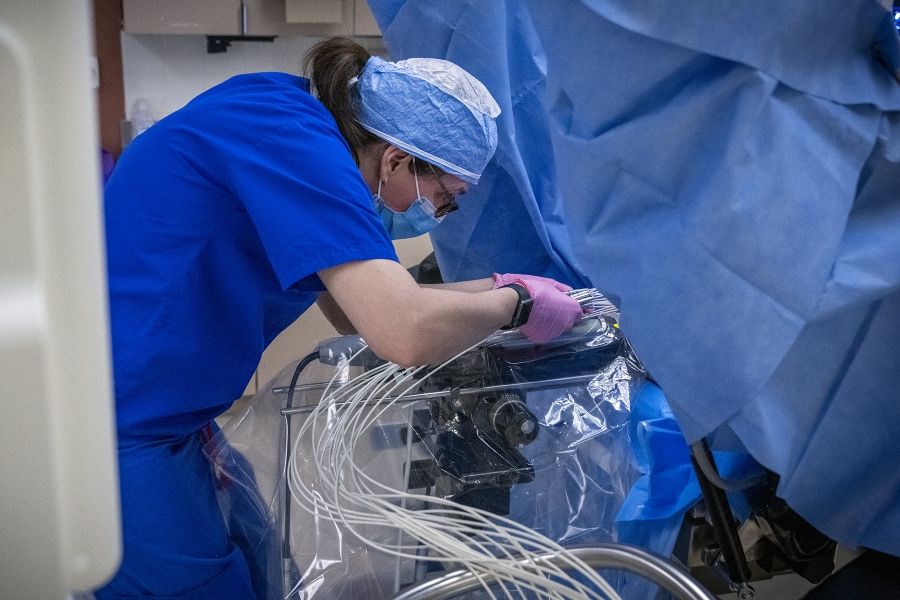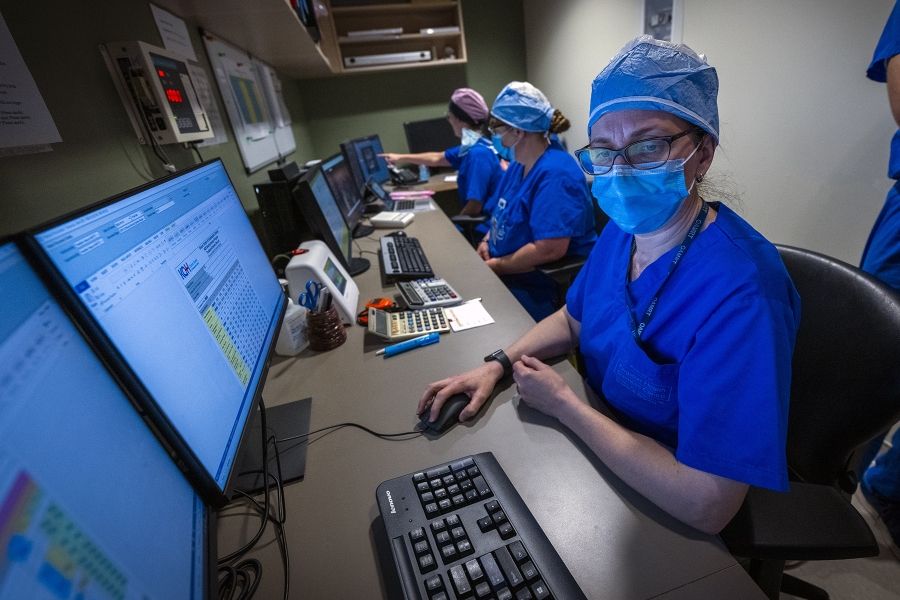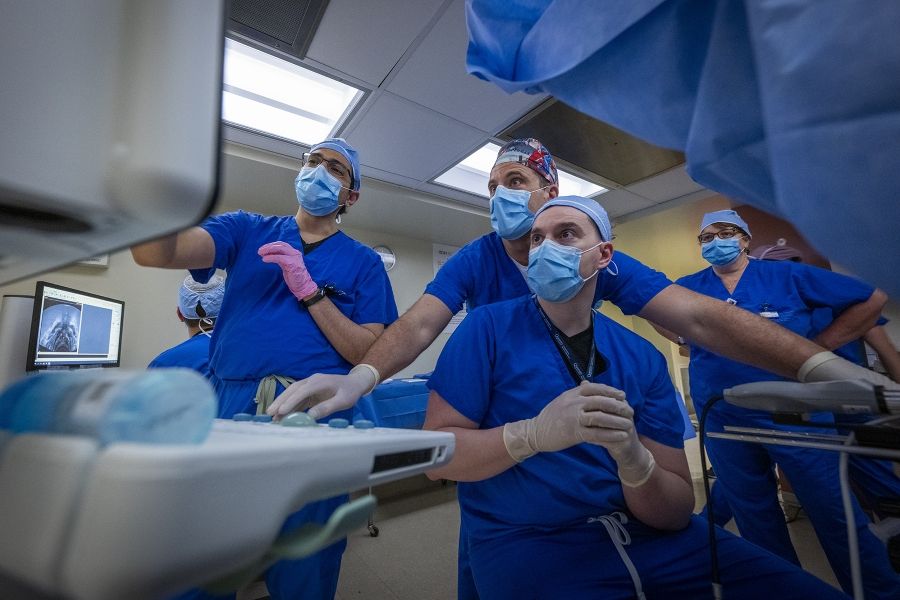Effective immediately masking is required for everyone when present on all inpatient units, in the Emergency Department (ED), the Urgent Care Centre (UCC), and the Children’s Outpatient Centre (COPC).

It might surprise you to hear radiation has been widely used to treat cancer since the early 20th century, shortly after the discovery of radium by Marie and Pierre Curie. Since then, the field of radiation therapy has come a long way.
Medical physicists worldwide have honed the technologies they use to target cancer, which are now so precise that patients can be treated faster and with minimal side effects. One of these treatments, called brachytherapy, has become a steadily growing area of expertise at Kingston Health Sciences Centre (KHSC).
Brachytherapy;
The treatment of certain cancers via the insertion of small radioactive implants directly into the tissue. The radiation therapy team at KHSC uses brachytherapy to treat nearly 200 patients each year.
What makes brachytherapy so effective is a combination of precision and potency. Sometimes referred to as internal radiation, brachytherapy involves guiding a tiny -yet powerful- radioactive source through a catheter, positioning it right next to or even inside the tumour.
“We can design the treatment to be extremely powerful at the location of the cancer and minimize its effects on other areas of the body,” explains Dr. Tim Olding, a medical physicist at KHSC. “This is called a rapid dose falloff, and it means other organs or tissues are spared from being exposed to the effects of radiation.”
Rather than continually delivering a low dose of radiation during a three-day hospital stay, brachytherapy is an outpatient procedure. Most patients walk out of the cancer centre the same day and may only require a few sessions. Often, results are seen shortly after the first treatment.
"Our cancer centre is home to one of the most comprehensive brachytherapy programs in the province," says Kit Tam, program manager for radiation therapy at KHSC. "We can use this technology to treat so many types of cancer including lung cancer, skin, esophageal, breast, gynecological, prostate… soon we will be offering rectal cancer brachytherapy, too.
Every time we grow the program it means more patients in southeastern Ontario can receive high-quality care, close to home."








